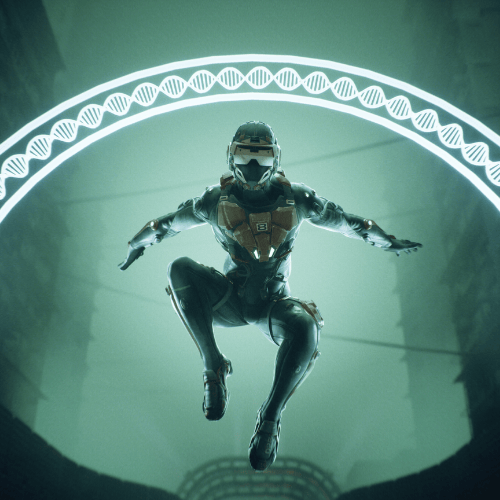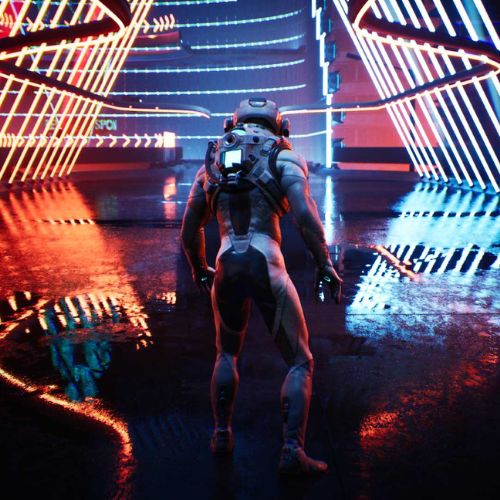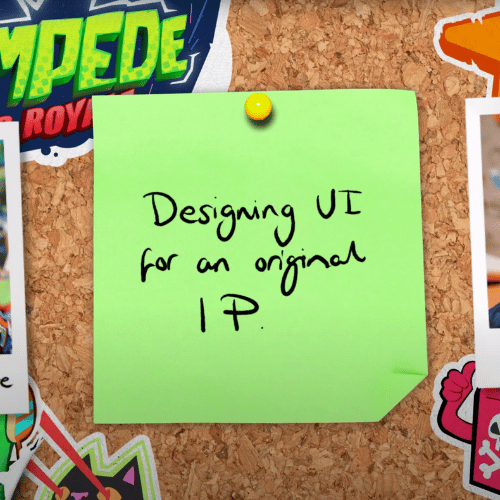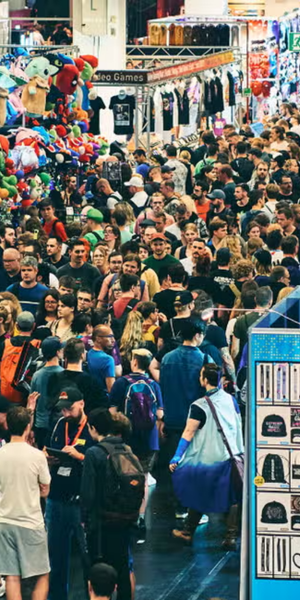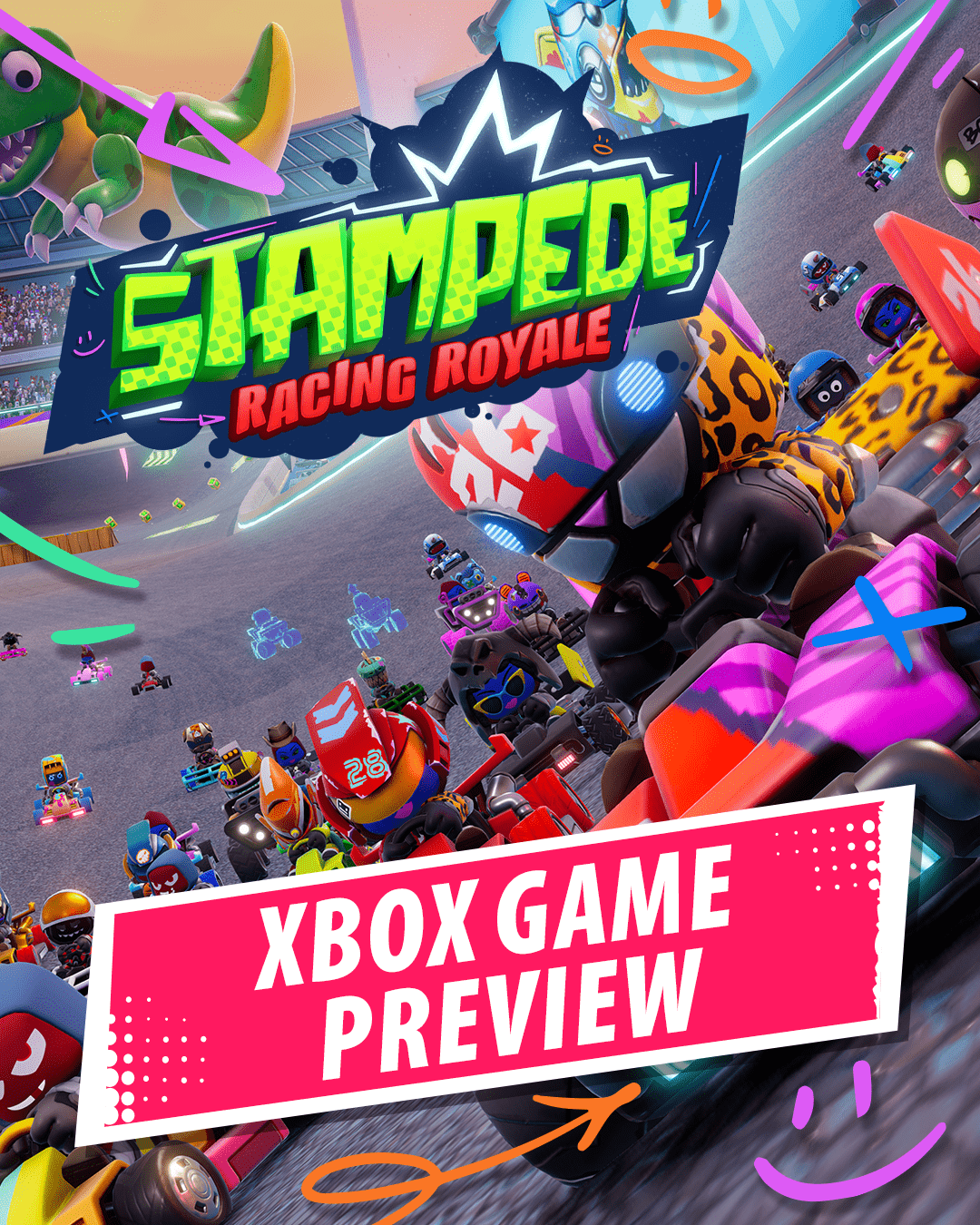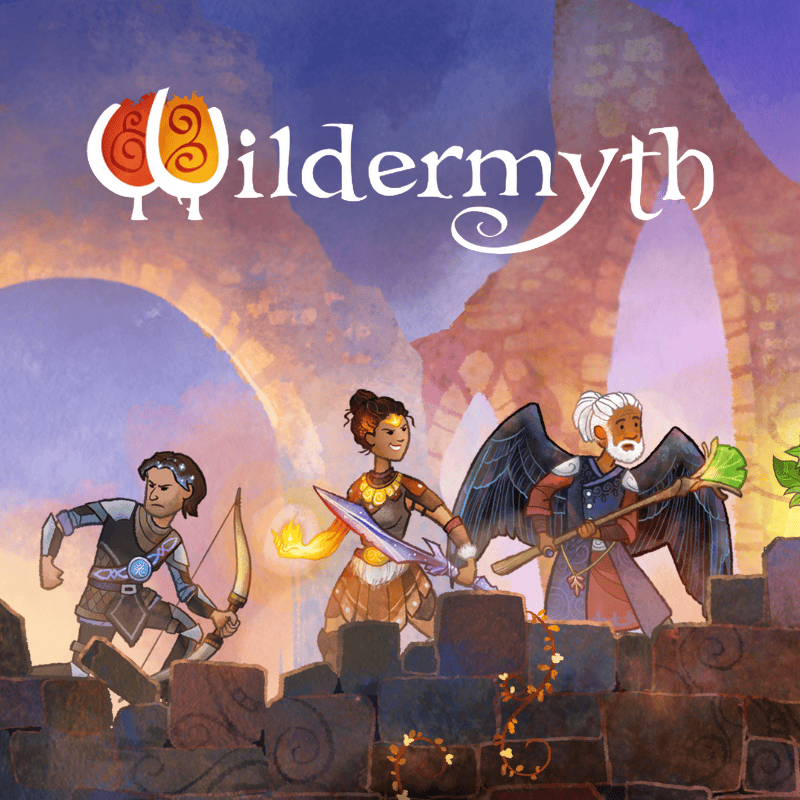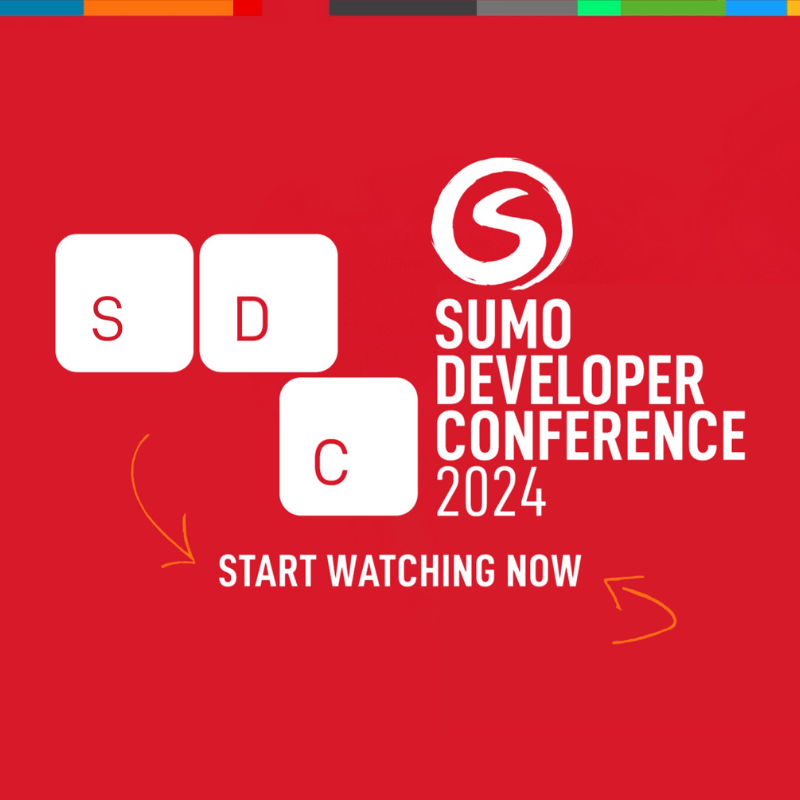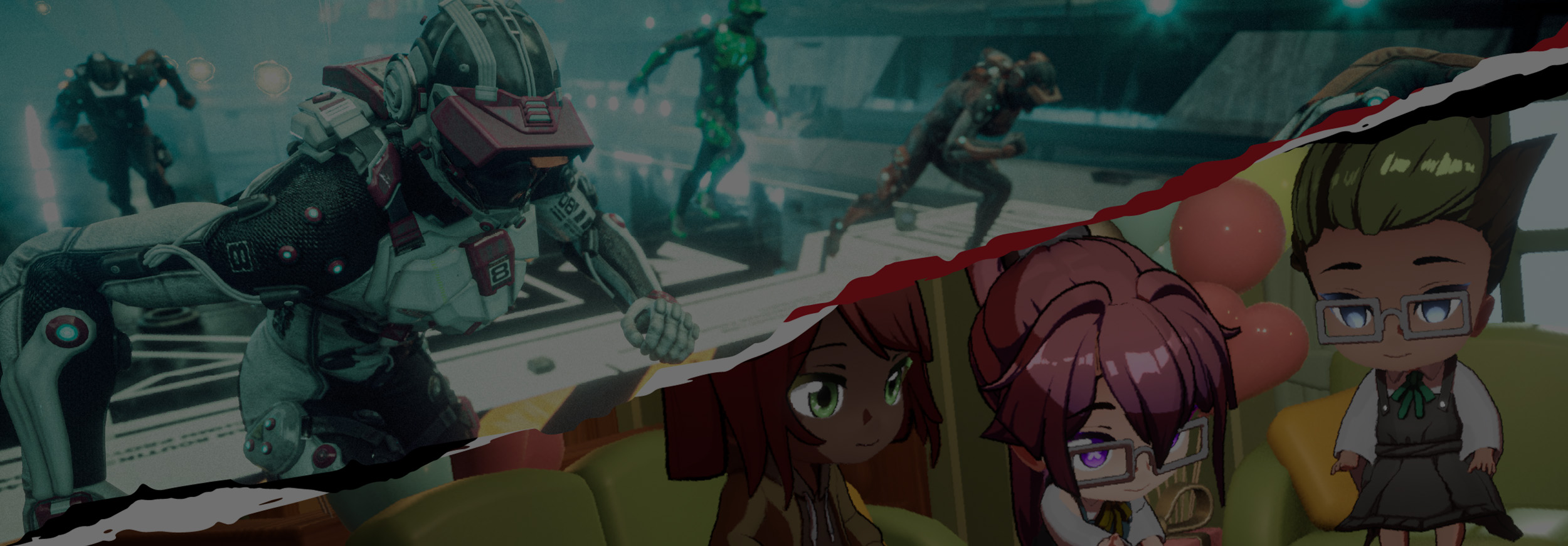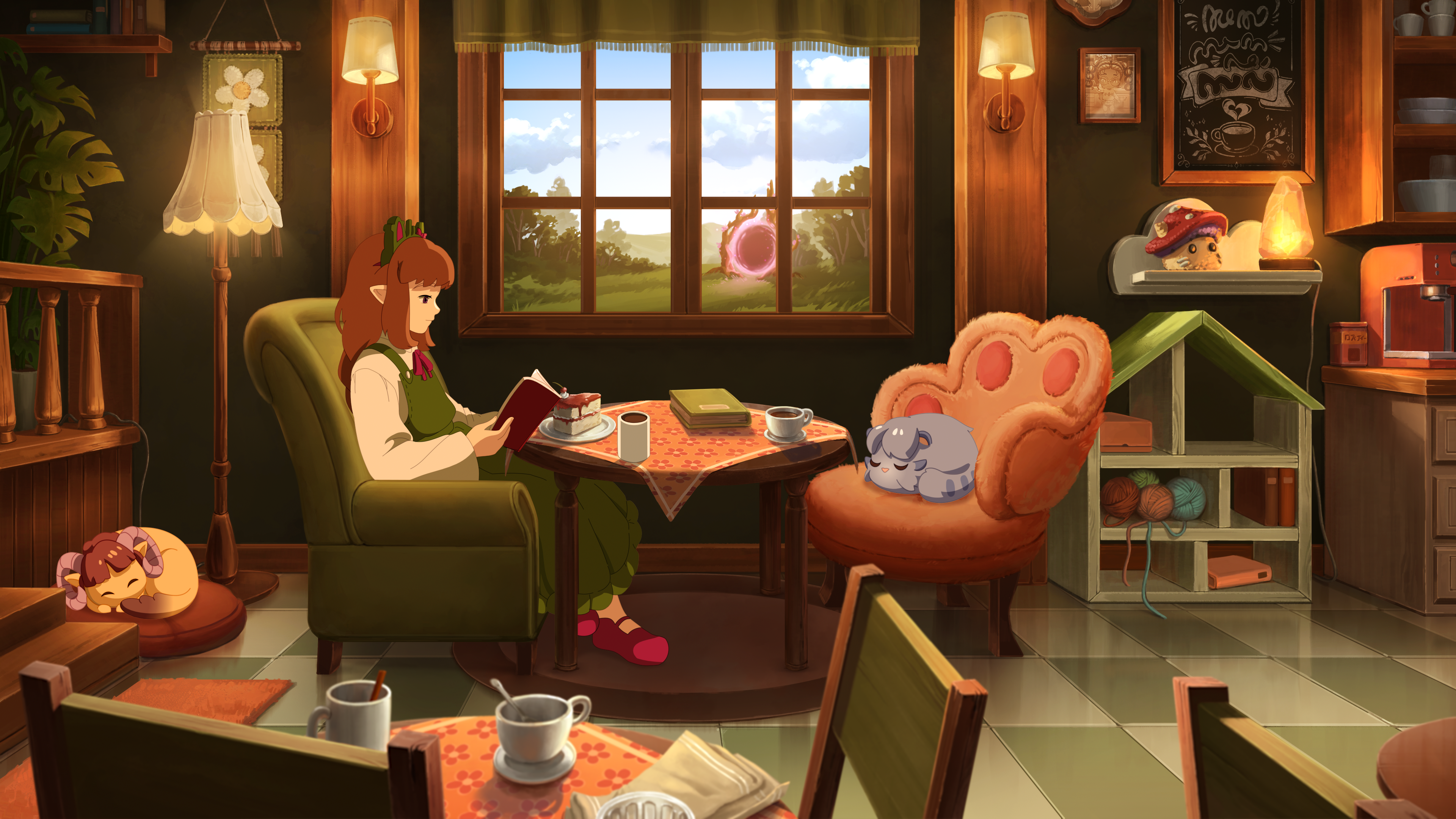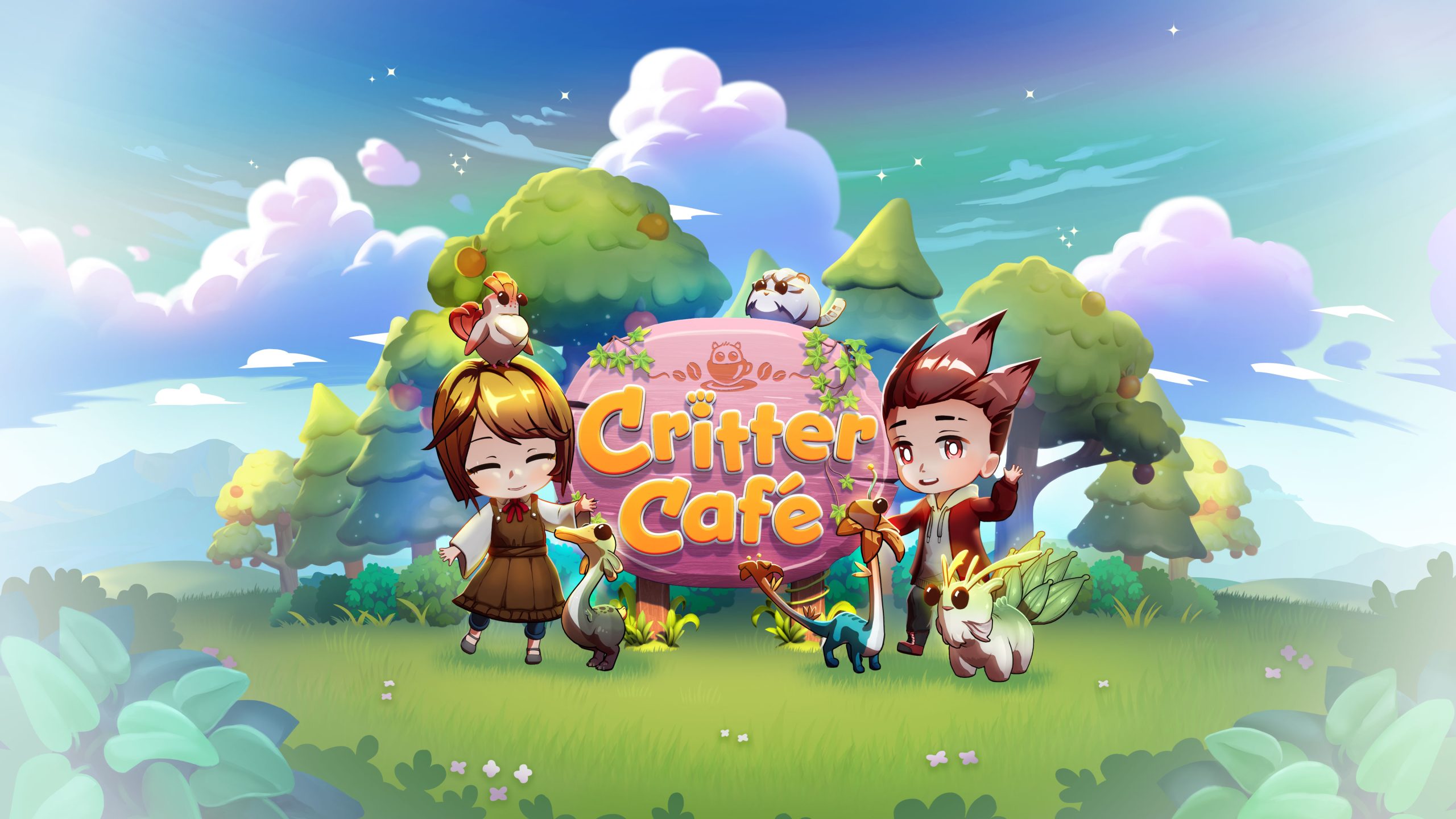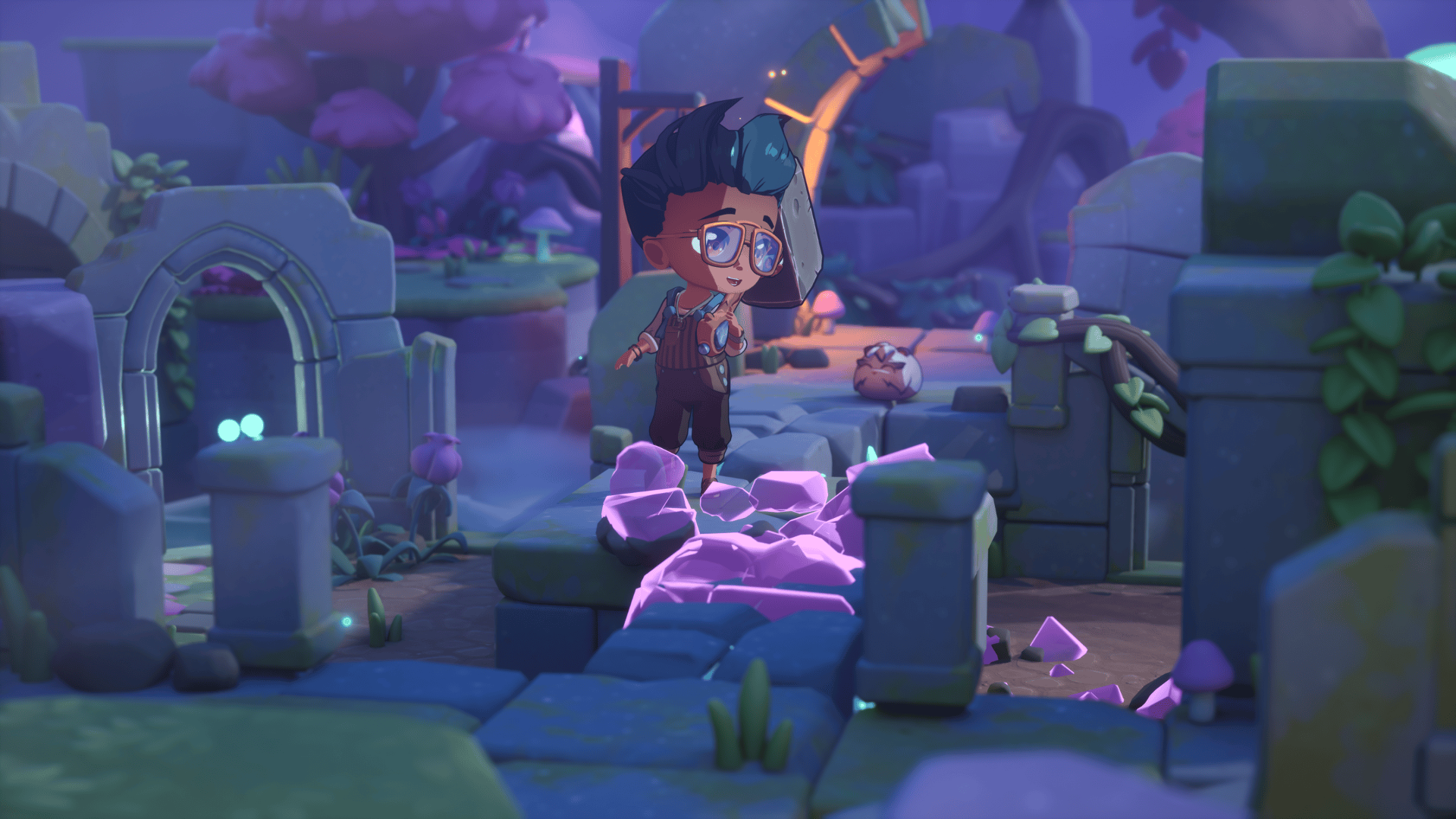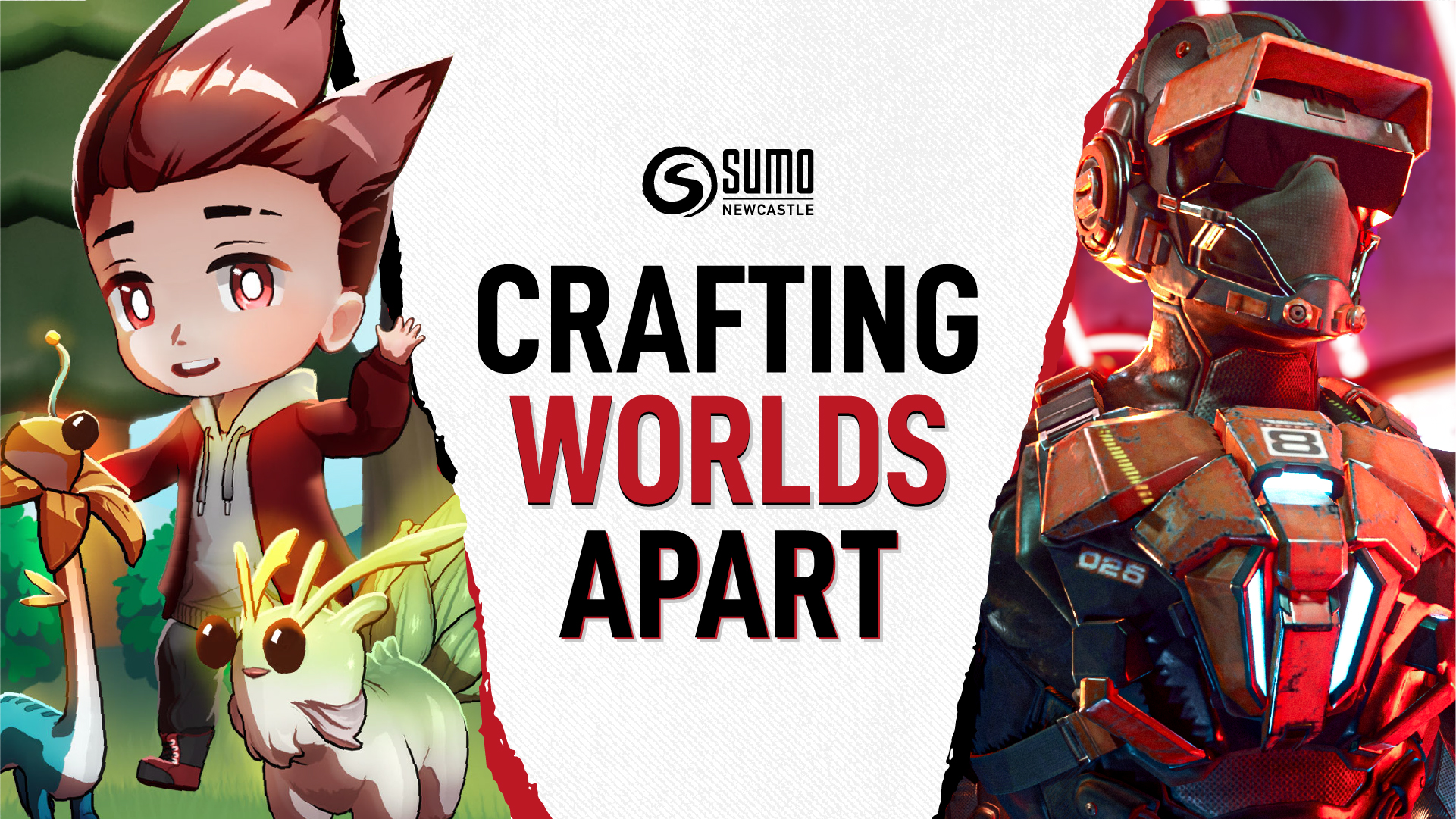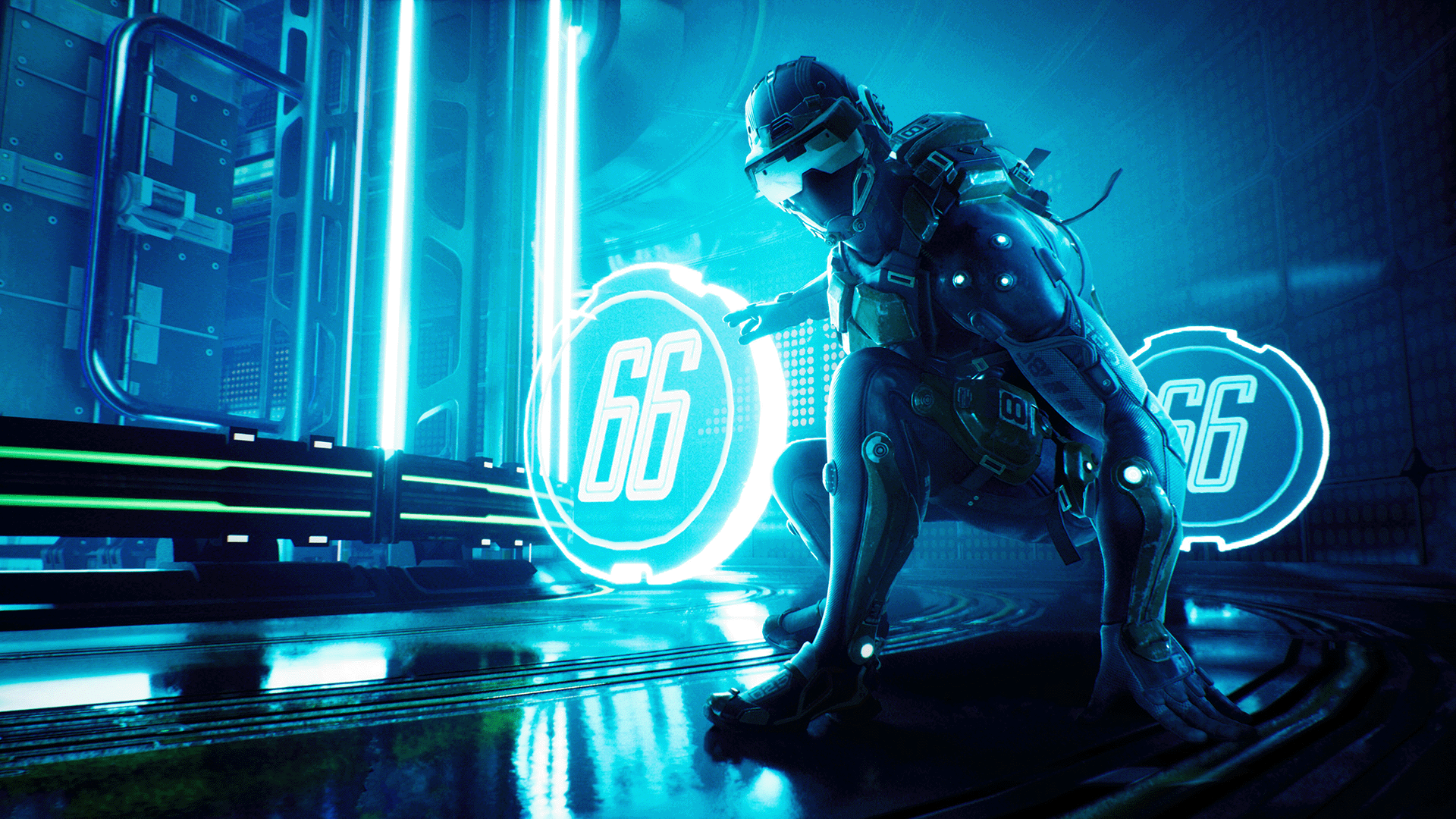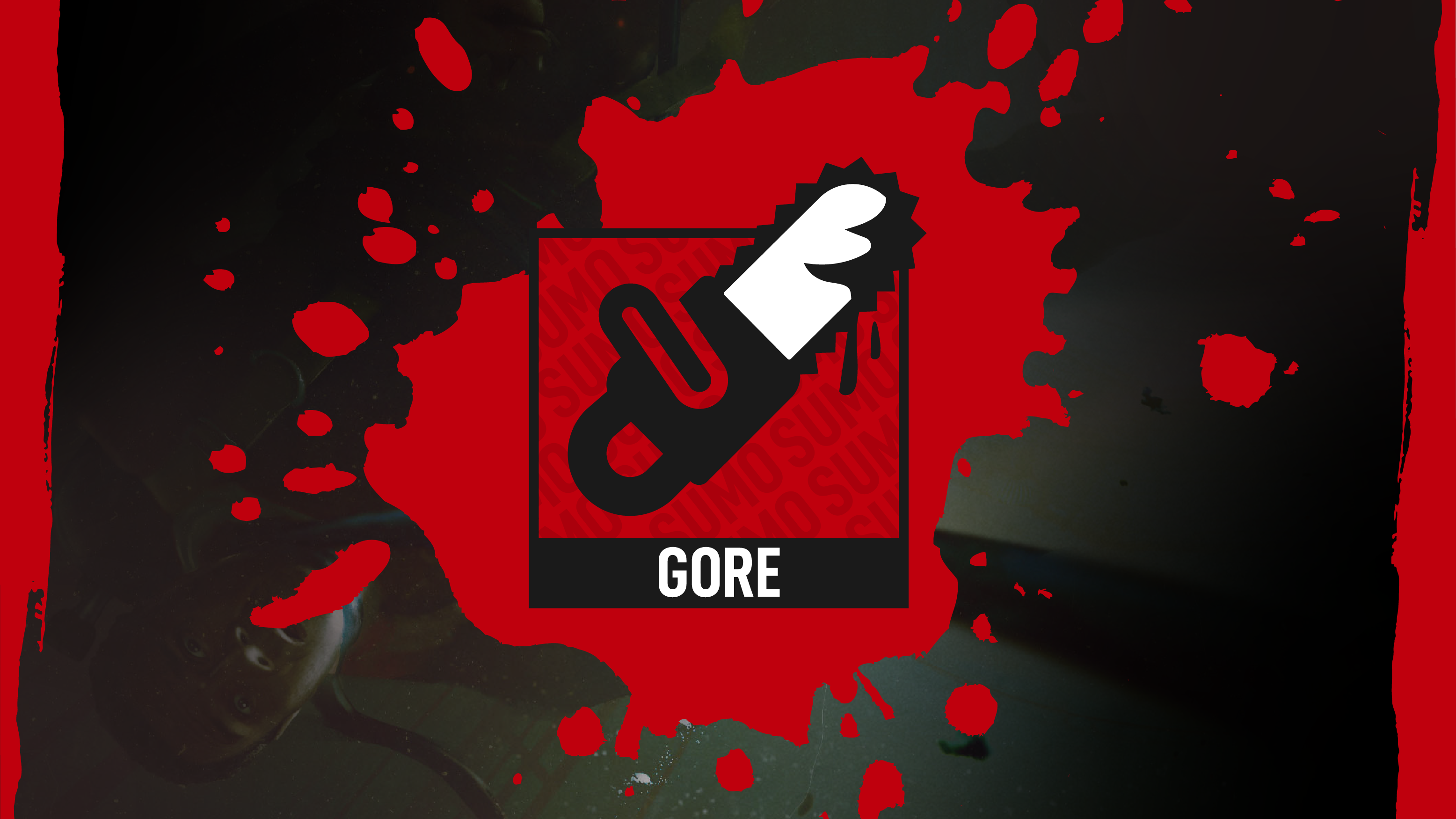There are countless examples of things that shouldn’t work together but do: fries and a milkshake, the colours green and pink, Barbie and Oppenheimer working together to create a box office smash at the summer cinema in 2023…
Whilst not every unlikely pairing can work in harmony, anyone who’s ever dunked a salty fry into a strawberry milkshake will tell you that there are rare occasions when opposites complement each other perfectly and elevate one another to new heights. In the world of game development, a story just like this has been unfolding as Sumo Newcastle has been working on its two, original-IP projects which could not be more different.
From under one roof in the Northeast comes DEATHSPRINT 66 – a bloody, bipedal racing game set in a dark and dystopian future where life is cheap, and bloodshed is entertainment – and Critter Café – a cosy café management and critter collection game set in a fantasy world.
On the surface, it might not appear as if these titles have much in common, but with the developers sharing a space, technologies and even the occasional team member, these two games were able to root themselves firmly in their opposing genres to flourish into unique gaming experiences.
Here, the team at Sumo Newcastle share their game development journey and reveal what can happen when you embrace both the dark and the light sides of game development.
THE DARK | DEATHSPRINT 66
The future is bleak… at least that’s the vision Game Director Andy Willans saw for DEATHSPRINT 66. On choosing to set the game in a dystopian future, he said: “The original idea for DEATHSPRINT 66 was to create a modern satire on the notion that we are entertaining ourselves to death. Using inspirations from books like The Running Man, and the dark comedy and dystopia of movies like Robocop, we liked the idea of having a deadly game which creates a messy, gore-filled, high-stakes spectacle.”
Game development takes time, and when DEATHSPRINT 66 was first considered back in 2019, the idea of a deadly gameshow wasn’t something with a proven audience. That all changed in 2021 with the release of Squid Game on Netflix which pulled a staggering 1.65 billion hours of viewing within the first 28 days of release, remaining to this day [as of November 2024] as Netflix’s most popular non-English TV show with over 2,205,200,000 hours viewed. With this renewed interest in deadly games, the Sumo Newcastle team realised the concept was likely to resonate with a modern audience.
The game is set in the year 2066, eccentric entrepreneur and tech trillionaire Braylan Bachman and his Bachman Media Network is set to dominate the world of brutal entertainment with the latest series of the headline show: DEATHSPRINT. Challengers take on the role of a Clone Jockey with an endless supply of clones to compete in the visceral velocity of DEATHSPRINT.
The game’s idea of ‘win or die trying’ was also a key factor in developing the racing mechanics of the game. Here at Sumo, we know a thing or two about making racing games, but DEATHSPRINT 66 marks the first time one of our teams has turned racing vertical. Bringing his love of the genre, plus the desire to give players the feeling of flow state, Andy said that simplicity was the key to supercharge the pace: “At the start of development we were toying around with combinations of gunplay and parkour with some really interesting objective juggling, but when this was proving too complicated for players, we decided to steer the game to become a pure racing experience.
“With speed as a priority, we wanted to strip DEATHSPRINT back to make the gameplay feel thrilling but not overcomplicate the mechanics to enable players to achieve a flow state. To do this, we gave all of our traversal ingredients magnetic properties so, should a player jump or run near them, they’ll automatically attach and ride them. We had played with the idea that you’d need to hold or release an input to trigger the latch, but we found that streamlining the mechanics enabled players to get into the flow and up their speed.”
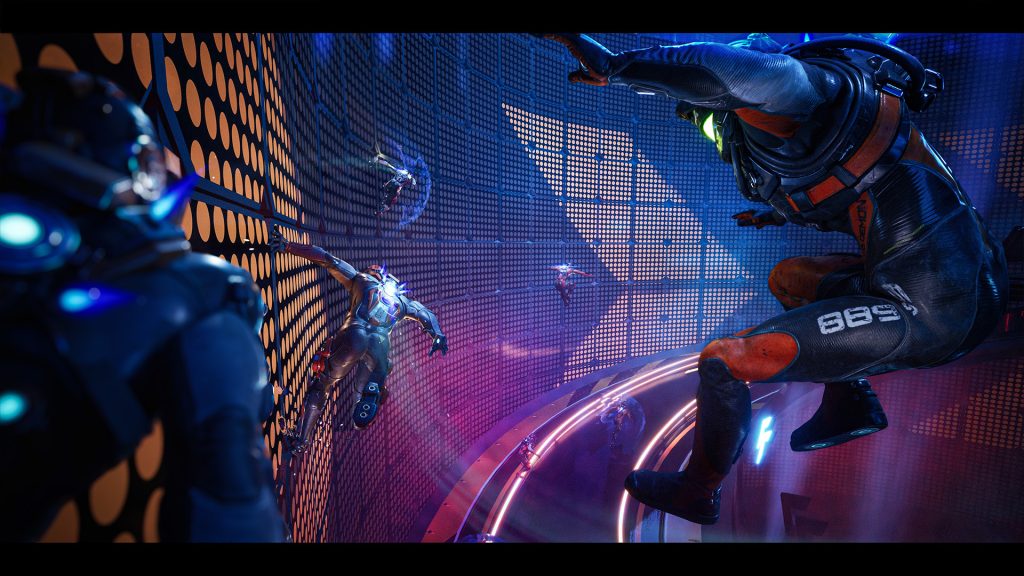
Players of DEATHSPRINT 66 are enable to get into a full ‘flow state’ thanks to uncomplicated mechanics, regular on-track boosts and lots of ways to traverse, including wall running.
Having players compete on two legs also leans into what makes racing games so popular: getting to experience out-of-bounds speeds. By creating a speed system which is hyper-responsive and literally puts nothing between the track and the player, the team managed to achieve a sense of speed which feels exhilarating. Andy said: “The idea of speed is something we really wanted to lean into for this game, and the result is an intense sensation of speed that is empowering and unmatched in an on-foot racing game. We designed a system that puts players at the very edge of control and gives them incredibly responsive inputs to create an exhilarating experience,”
To get players into the sporting mindset, the Sumo Newcastle team leaned into some of the conventions of both in-game and IRL racing and sport, and implemented them into DEATHSPRINT 66. By intentionally using recognisable motifs and traits, Andy says that players are conditioned to get their game faces on: “The colours used throughout the game are instantly recognisable of the racing genre and are significant enough that players immediately know what to do: red is danger, yellow is the “golden path” and blue is used to signal that something is ‘out of world’, which for us means it’s the ‘gameshow’ layer with things on-track only appearing to us as the ‘viewer’ of the action.
“The game is fast, fierce and ferocious, and we needed to use vibrant colours to support with visibility for the player. Our race tracks sit like neon rollercoasters atop abandoned, hallowed cities and the colours we use which are bright and aggressive are in stark contrast to the grey, empty worlds of days gone by.”
“To me, that’s what DEATHSPRINT is all about: it’s loud, it’s over-the-top but beneath it sits a human story which the entertainment – no matter how bright – can never quite escape.”
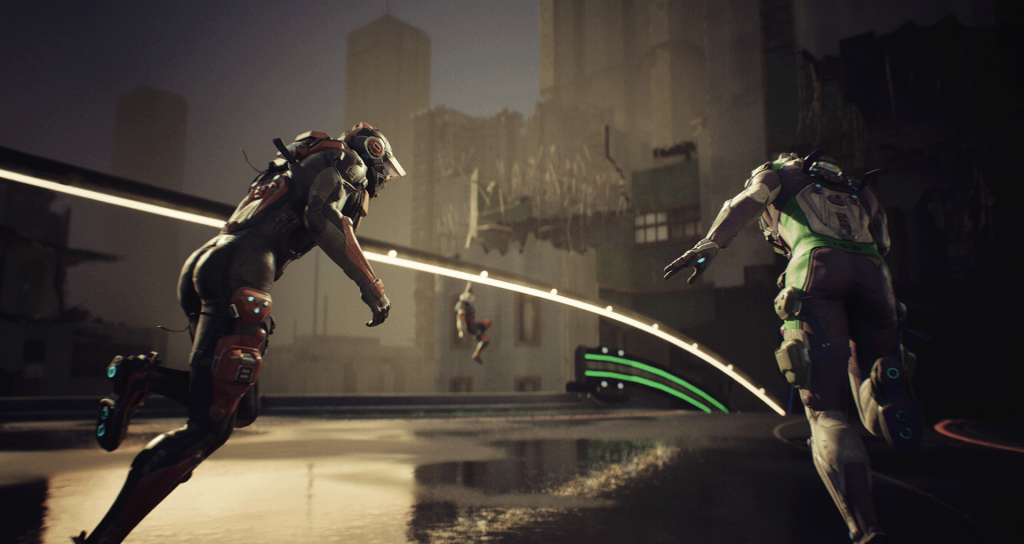
DEATHSPRINT 66 takes place in the not-so-distant future where the world has been ravaged by a climate war. The racers compete on tracks which sit in the middle of abandoned cities.
Racing is a genre which not only has some of the highest number of release each year, but one which is able to continually retain players and gain their loyalty. The learning curve for racing games can be steep which means a lot of players will commit to mastery before moving onto a new title, which – combined with lots of opportunities for progression, customisation and the personalisation of a skill tree – puts the genre as one of the top for player loyalty. In fact, a 2023 Mobile Gaming Report from Mistplay concurred that racing sits in the top five for player loyalty, and in their survey of mobile gamers, 57% said that progression is the main thing that keeps them coming back for more. Something which racing games is able to offer its players in abundance.
So in a genre which has hardcore fans and loyal audiences, how can you get your racing game onto the podium? Andy says simplicity is key: “Some of the all-time great racing games don’t overcomplicate their gameplay. By inflicting a lower cognitive load onto the player, which is free from messy mechanics and complicated controls, they’re able to achieve higher speeds which lead to more exhilaration, thrill and freedom.”
It’s widely believed that the sense of freedom is what players are looking for when they settle into a racing game, Andy surmised: “Racing games are able to realise experiences we can’t get in real life. To get onto a track and travel at extremely high speeds is an exhilarating experience… especially when you’re getting to do it in a luxury, off-limits vehicle. They provide a feeling of freedom and release to players which are able to deliver an instant adrenaline hit whilst also offering a way to expend excess energy and quieten the mind.
“With five decades of racing titles to choose from, it’s likely that everyone has played a racing game during their lives – whether it’s a car, a plane, a hoverboard or event on-foot, and that sense of nostalgia and understanding is very powerful when it comes to players staying interested in a game. Developers are always finding new ways to switch up the formula, innovate and use new technology in racing games, and its versatility as a genre means it’s unlikely to fall off the track anytime soon.”
THE LIGHT | CRITTER CAFÉ
With the bloody, speedy and gory world of DEATHSPRINT 66 already in development at Sumo Newcastle, the idea of switching gears and slowing the pace to create a cosy game came about by accident as part of the studio’s annual Game Jam. Eleanor Gregory – a Programmer at the studio who was working on the early prototype for DEATHSPRINT 66 – brought all of her favourite cosy gaming conventions together to create the pitch for Critter Café: “I’ve always been a fan of cat cafes and fantasy creatures, and combining those two things into one game just felt like a lovely setting to explore.”
A far departure from the guts and grime of DEATHSPRINT, Critter Café invites players to slow down, snuggle-in and relax in a low-stakes, calming environment. In an increasingly stressful world, cosy gaming plays more of a role now than ever before, as evidenced by Animal Crossing: New Horizons (which released in March of 2020) selling over 31.8 million units globally during its first year – being the best-selling, second best-selling and third best-selling in Japan, the UK and the US respectively for that year. Since then, cosy games have continued to gain momentum and be popular, with more developers than ever looking to provide an escape for their players.
In Critter Café, you arrive at Gold Leaf Isle and are met with a run-down café in need of a new owner, with the help of your new friends you begin to customise and decorate your café, and discover that the isle is full of magical portals which hold secrets, puzzles to be solved and… some very, very cute critters. Once you crack the code and collect your cute companions, you’re able to bring them back to the café where they’ll meet and delight your customers, as you serve coffee, prepare meals and host events.
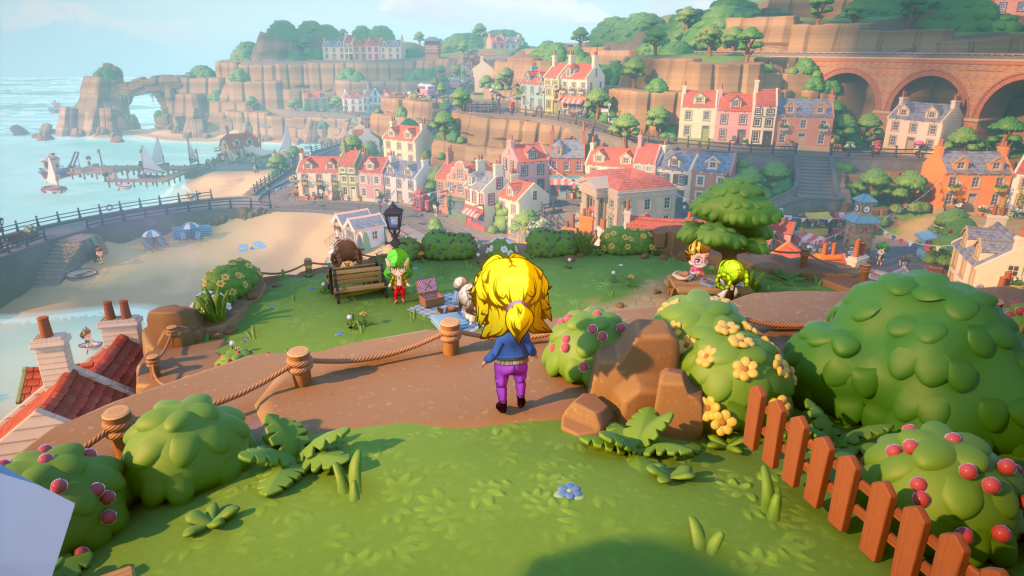
In Critter Cafe, you land at Gold Leaf Isle ready to take on running your new cafe and rescue some cute critters.
This might sound like a lot of mechanics in one place, but Eleanor says that what makes cosy games so special is the ability to take your time: “When I’m playing a cosy game, I want something that gives me a fun, fantasy world that I can explore at my own pace and doesn’t apply too much pressure. I love to feel like I can take the time out to look round without the worry of a ticking clock.”
It’s a fine balance for game developers to walk to create enough content where players feel motivated to continue without ever feeling overwhelmed and stressed, but this is where the cosy gaming genre really shines. Cosy games by their nature are dopamine machines; the ask upon the players is usually relatively low but the reward is high to create a sense of achievement and accomplishment. Eleanor says the team were ready to meet this challenge head on: “We wanted players to be motivated to do a good job, but not stressed to make things perfect and landed upon the idea of ‘failure’ being soft – no situation will have a bad or tragic outcome: critters won’t run away if you take too long to rescue them, customers won’t get angry if you mess up their order and players won’t get hurt if they fail to solve a puzzle. If you get things right, you’ll be rewarded with cosmetics or décor or relationship boosts, but if things go wrong then you can try again or choose to move on.
“Our guiding principle was that you can only improve on an already good situation.”
Critter Café could not be visually any further away from its sister title, DEATHSPRINT 66, as its visual identity is firmly rooted within the cosy genre, and it embraces shape and colour theory to create a warm, welcoming experience for players. Eleanor said: “The art team put a lot of amazing work into creating the style of Critter Café – it’s colours and tones are bright but not overwhelming, the shapes are soft and non-threatening, and the design is very cute and approachable. There’s a very ‘homemade’ feeling to be found throughout the game, too, with things such as the journal and scrapbook stickers looking and feeling like something very personal.”
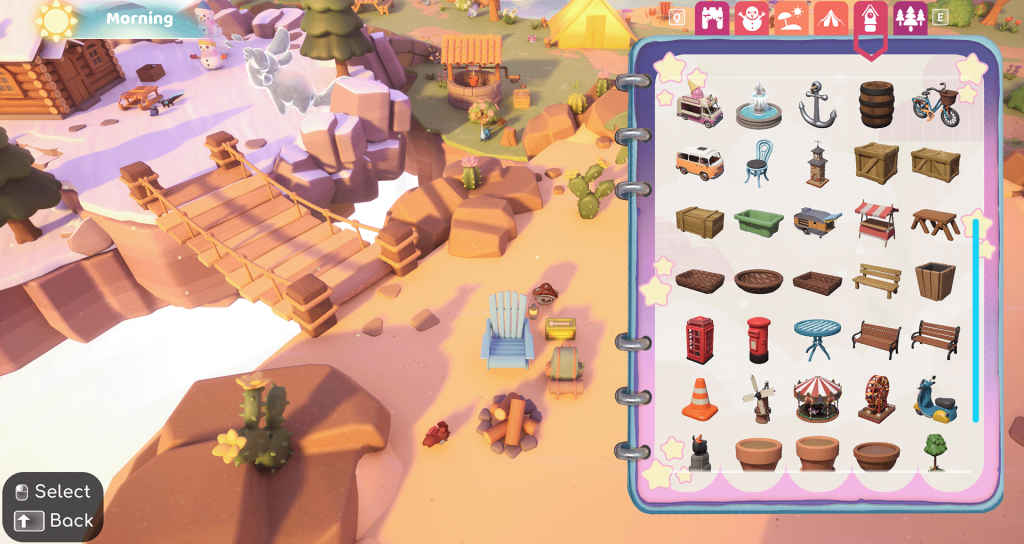
Critter Cafe is packed with details which look handmade and crafty – two things which are synonymous with the cosy genre.
There’s a lot to be said for the simplicity of cosy gaming mechanics, and even if you’re just planting flowers or fishing or decorating or… paying a lifelong debt to a tyrannical tanuki… they’re a part of what makes the genre so beloved. Eleanor says: “Critter Café is a game of two styles – you have one which is very focussed on the rescue, rehabilitation and ongoing care of your critters whom you’re able to build bonds with and care for, and the other is about running the café where you’ll be pouring drinks, serving food and playing host. I think both of these feed into each other and give players the option to keep their play sessions interesting and fresh: it’s for the adventurer, the homebody and everyone in-between.”
According to SteamDB, there have been over 400 cosy games released on the platform alone – an all-time peak and over double of what was released last year. With events like Wholesome Direct and Cozy Quest running annually and providing cosy fans sneak peeks and insights into their favourite (and future favourite) titles, it seems that cosy gaming is here to stay. On the genre, Eleanor said: “Cosy gaming has really taken off and it’s an exciting time for wholesome gaming fans as people are always creating new settings, worlds and scenarios just waiting to be played. I hope that Critter Café appeases people like me who are fans of magic and fantasy and cosy gaming mechanics, and it’s something I’d love to see more of in the future!”
THE GREY | THE TRAITS WE SHARE
In the spirit of collaboration and learning, these two teams had the opportunity to work closely while working on their separate projects. Andy says there were lots of unexpected benefits that came out of having both the DEATHSPRINT 66 and Critter Café teams working on close quarters: “Both our games are made in Unreal Engine 5, which meant we were able to explore new technologies in parallel – if we came across a tool or feature that we thought would work for the other team, we were able to pass this over to the other team for them to trial.
“We were also supported by other studios across Sumo which meant we could pull from the huge volumes of expertise and skills from other teams – whether that was porting to other platforms, backend support, art support, trailer creation. Having all these talented people working on our games has kept us challenging ourselves and the creativity flowing.”
These two games might not share many characteristics or qualities, but the teams making them were able to get familiar with the other during playtests, studio showcases and more. This inter-studio connectivity leads us to the ultimate question: if you could take one thing about the other game for yours, what would it be and why?
On bringing dark dystopia to Critter Café, Eleanor said: “That’s a very different world setting that I would like to spare the Critters from knowing about! During my time working on the DEATHSPRINT 66 prototype, I had a lot of fun working on the movement mechanics like wall-running and ziplining… I think if anything from the dystopian future could land into Critter Café, then they would be a fun way for players to traverse rifts.”
When it comes to incorporating fuzzy friends into DEATHSPRINT 66, Andy said: “It would be hilarious to pet your Clones before they head into a race using the mechanics found in Critter Café – brush their hair, give them a stamina treat and then send them out into the brutal world of DEATHSPRINT! Critter Café has exceptional customisation options and I would have loved to have been able to push our clone customisation further – we had lots of plans to expand on it with the inclusion of synthetic limb replacements, exo-skeletal sports frames and even superpower-like mutations. Never say never, though!”
Whilst we might not be expecting to see Critters on the brutal tracks of DEATHSPRINT or the clones settling down for a comfy cup of chai any time soon, these two games were able to learn a lot from each other, share ideas and develop their techniques. By having a studio alive with excitement for these original projects, a great supply of play-testers and some very interesting overheard conversations around gore velocity, critter fur density and everything in between, Sumo Newcastle has created two games packed with creativity, colour and passion.
It’s safe to say that because these games knew each other, they have truly been changed for good.
When they aren’t working on rapid racing titles or comfy cosy games, Sumo Newcastle are busy bringing their expertise in a range of services including Full Dev, Co-Dev, Engineering, Tech Art & Concept Art. To find out more about working with them, please visit the Services Page.



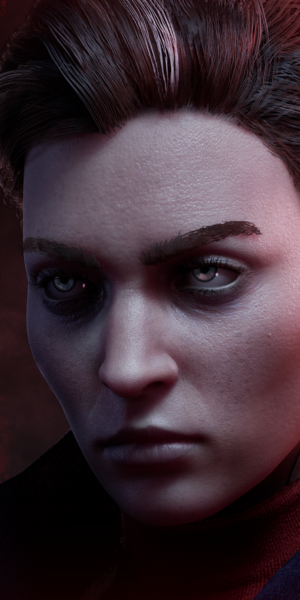 Vampire The Masquerade: Bloodlines 2
Vampire The Masquerade: Bloodlines 2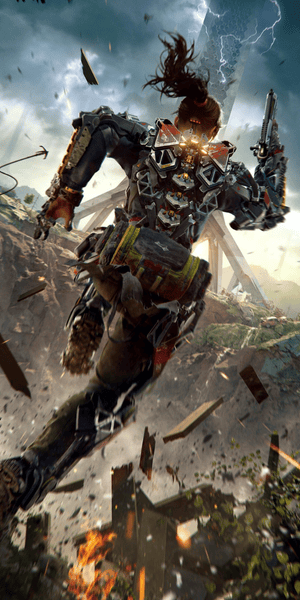 Exoborne
Exoborne Mars Horizon 2: The Search for Life
Mars Horizon 2: The Search for Life